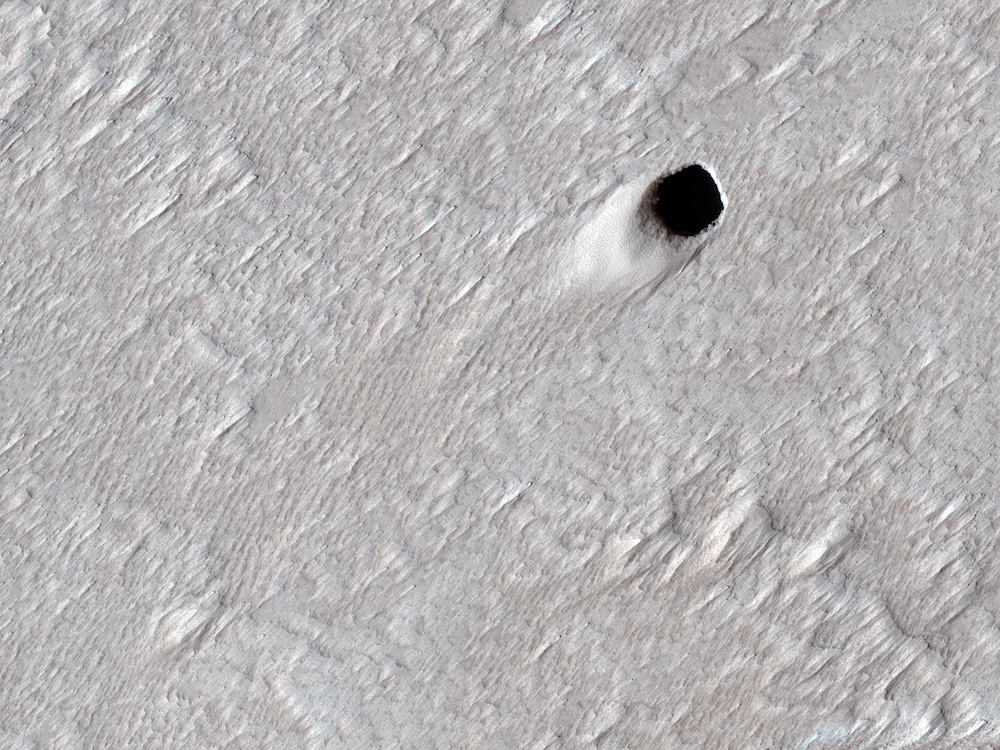Sometimes, all you need for a new discovery is some creative math. That was the case for a new paper by Edward Williams and Laurent Montési of the University of Maryland’s Department of Geology. They released a brief paper at the Lunar and Planetary Science Conference last month that describes a mathematical way to estimate the size of a lava tube using only remote sensing techniques.
A critical starting point was the discovery that the ridge height of a surface above a lava tube is proportional to the cube of the height of the lava tube’s roof. Plenty of lava tubes have been studied in detail on Earth, and those studies were used to form the basis of that equation.
However, until now, there was no relationship between the roof thickness and the details of the shape of the lava tunnel itself. Enter physical modeling – the authors used a physics modeling program (COMSOL Multiphysics) to model different roof heights based on different characteristics of tunnels.
One big difference was the form of the tunnel itself – they focused on two styles. One, known as “laccolith,” was a rectangle, whereas most people would think of a half-ellipse style when considering lava tubes. The modeling program also had to consider things like the material strength of the regolith as well as the pressure inside the tunnel itself – which would usually match the outside atmospheric pressure of largely airless worlds like the Moon and Mars, assuming there is a hole that connects it to the greater atmosphere.
The equation the authors eventually found uses some fancy calculus and is beyond the scope of this article. Still, their model seems to fit the data for most modeled lava caves, including those on Earth.
They turned their model to a well-known cave structure on Earth to prove that point. Valentine’s Cave, located in the Lava Beds National Monument in California, has been studied for decades by NASA researchers as an analog to caves found on the Moon and Mars. Those studies have resulted in accurate cave heights and ridge height estimates using techniques such as LIDAR.
When applying their new model and using the known ridge height of Valentine’s Cave, the authors find a tube height within .07 m of the actual height of the Cave. Not bad for calculating the height only from the ridge height, which is an externally visible feature.
The obvious next step is to attempt to estimate some lava tube heights on our neighboring planetary bodies. At least some remote observatories around the Moon and Mars should be capable of estimating ridge height from their orbital positions. It’s then up to the team to estimate what the inside of the tube might look like. Unfortunately, it will probably be a while before human or robotic explorers enter one of these tubes to confirm the author’s estimates. But there are plenty of proposals for that as well – and one day, undoubtedly, someone or something will indeed step foot inside one of these ancient geological formations.
Learn More:
William & Montési – DETERMINATION OF LAVA TUBE DEPTH AND SHAPE FROM TOPOGRAPHY
UT – It’s Time to Study Lunar Lava Tubes. Here’s a Mission That Could Help
UT – Future Mars Helicopters Could Explore Lava Tubes
UT – Lava Tubes on the Moon Maintain Comfortable Room Temperatures Inside
Lead Image:
Lava tube on Mars
Credit – NASA/JPL-Caltech/University of Arizona

